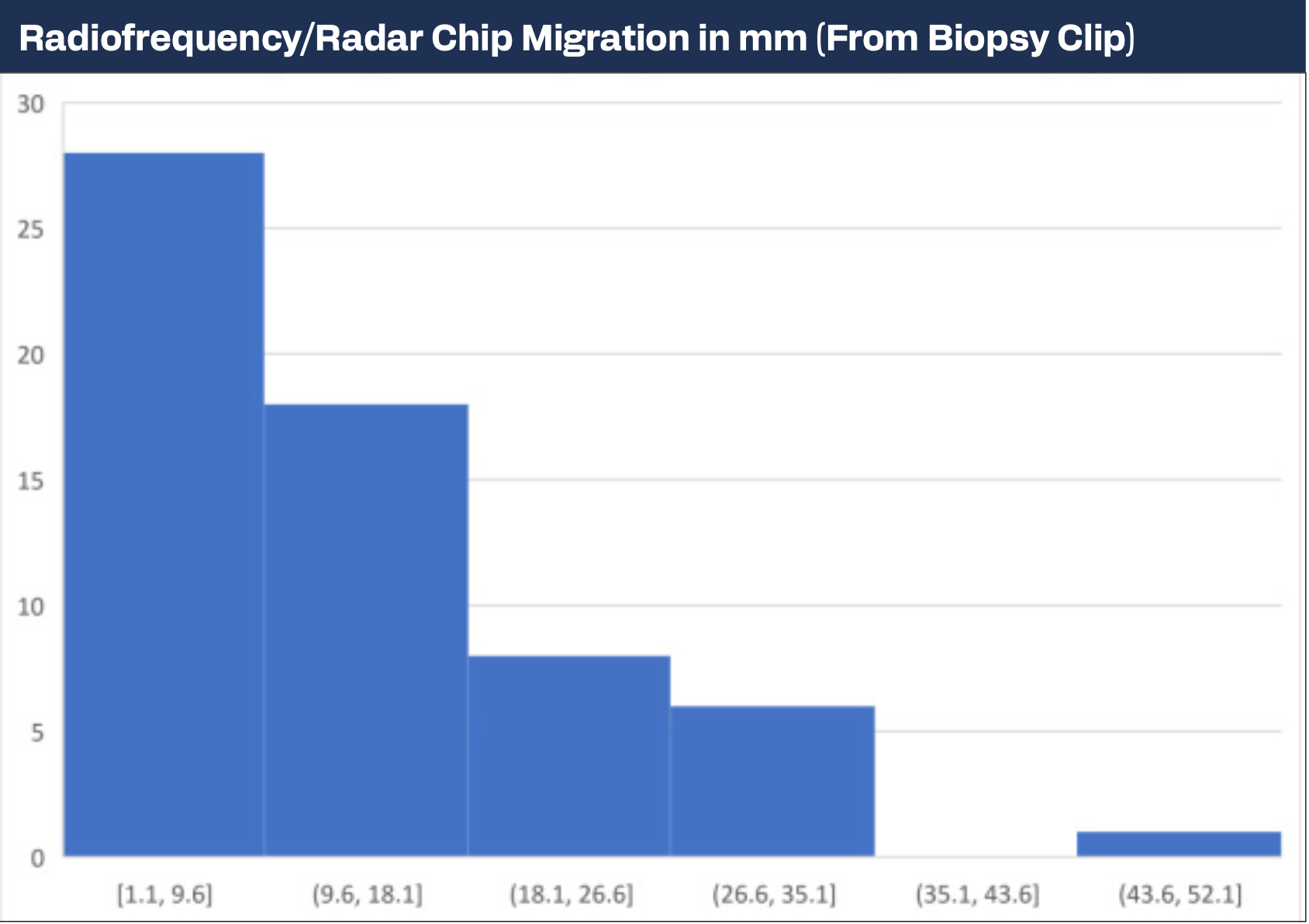48 The Era ‘or Error’ of Second Localization Procedures
Background
Clip migration is known to occur after a core needle breast biopsy. Radiofrequency and radar (R) breast localization involves a second localization procedure based on the prior clip placement potentially compounding the migration from the original biopsy site. Fluoroscopic intraoperative neoplasm detection (FIND) obviates the need for a second localization by using intraoperative fluoroscopy to localize the original biopsy clip using direct visualization to choose margins. We hypothesize that intraoperative localization based on the original clip vs a second localization would result in fewer positive margins due to second clip migration.
Methods
A retrospective review was performed of patients with a diagnosis of nonpalpable malignancy between the ages of 18 to 99 years who were admitted to the breast surgery service from September 1, 2016, through August 21, 2023, with the following Current Procedural Terminology codes: 19281-19288, 19301, 19302, 19120, 19125, 19290, 19291, 76000, 76098, 76942, 77001, 77002,77021,77031, and 77032. Results were compared between the patients who underwent R localization vs FIND including age, body mass index, imaging, pathology, margins, operative reports, fluoroscopy radiation dose, and cost of each procedure. The Pythagorean theorem was used to calculate the distance in space between the initial biopsy clip and the R localization device. χ2 was used to calculate the 2-tailed P value between the 2 groups.
Results
Radiofrequency/Radar Chip Migration in mm (From Biopsy Clip)

We identified 169 patients: 119 patients localized with FIND and 50 localized with R. Five percent (n = 6) of the patients with FIND and 14% (n = 7) of the patients with R had positive margins (P = .04). The average distance between the R device and biopsy clip in patients with positive margins was 20.1 mm and in those with negative margins was 11.8 mm (P = .04). The Figure demonstrates the variation in RF clip migration.
Conclusions
Although the positive margin rate with R localization is equivalent to needle-localized breast biopsies, this was still significantly greater than the positive margin rate with FIND. The positive margin rate was associated with the distance from the localization device to the initial biopsy clip. Eliminating the second localization decreases preoperative procedures and their associated discomfort, cost, and error involved in localizing the tumor and may result in improved margin positivity rates.

Newsletter
Stay up to date on recent advances in the multidisciplinary approach to cancer.